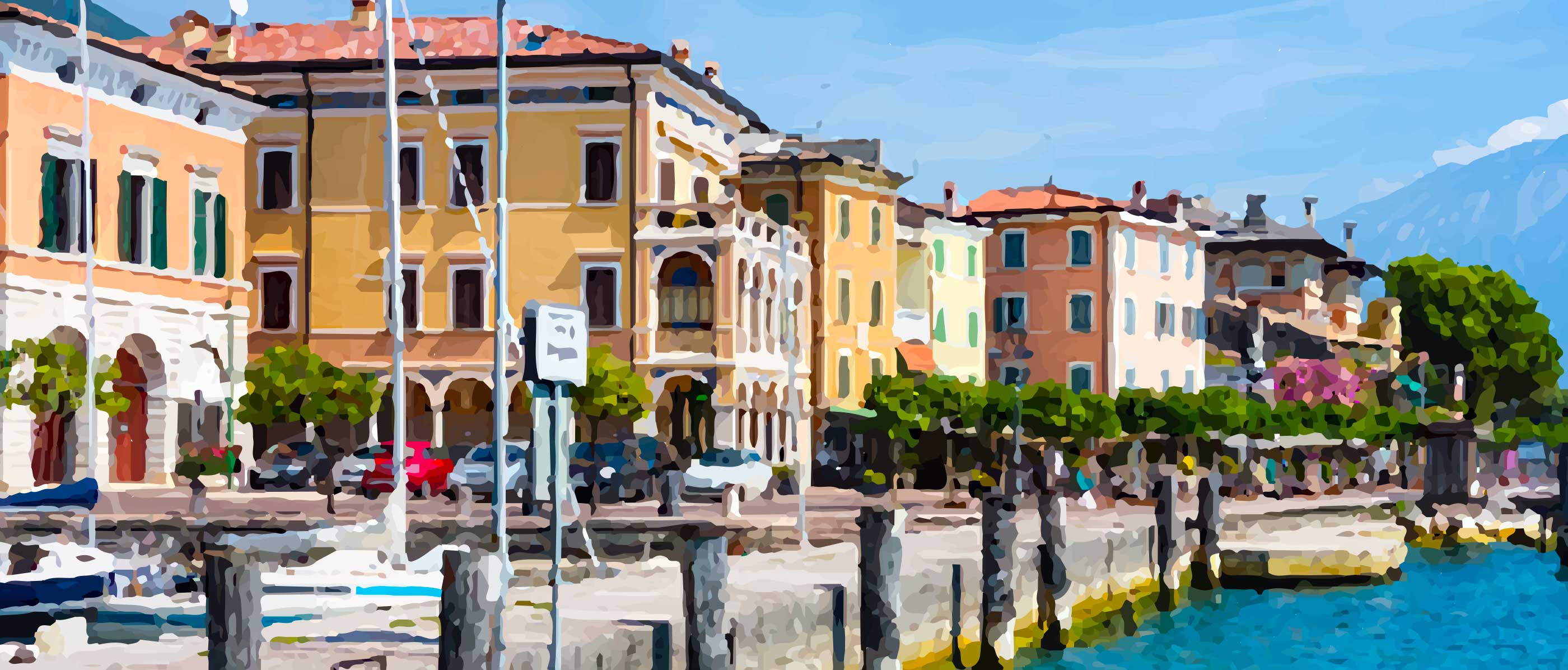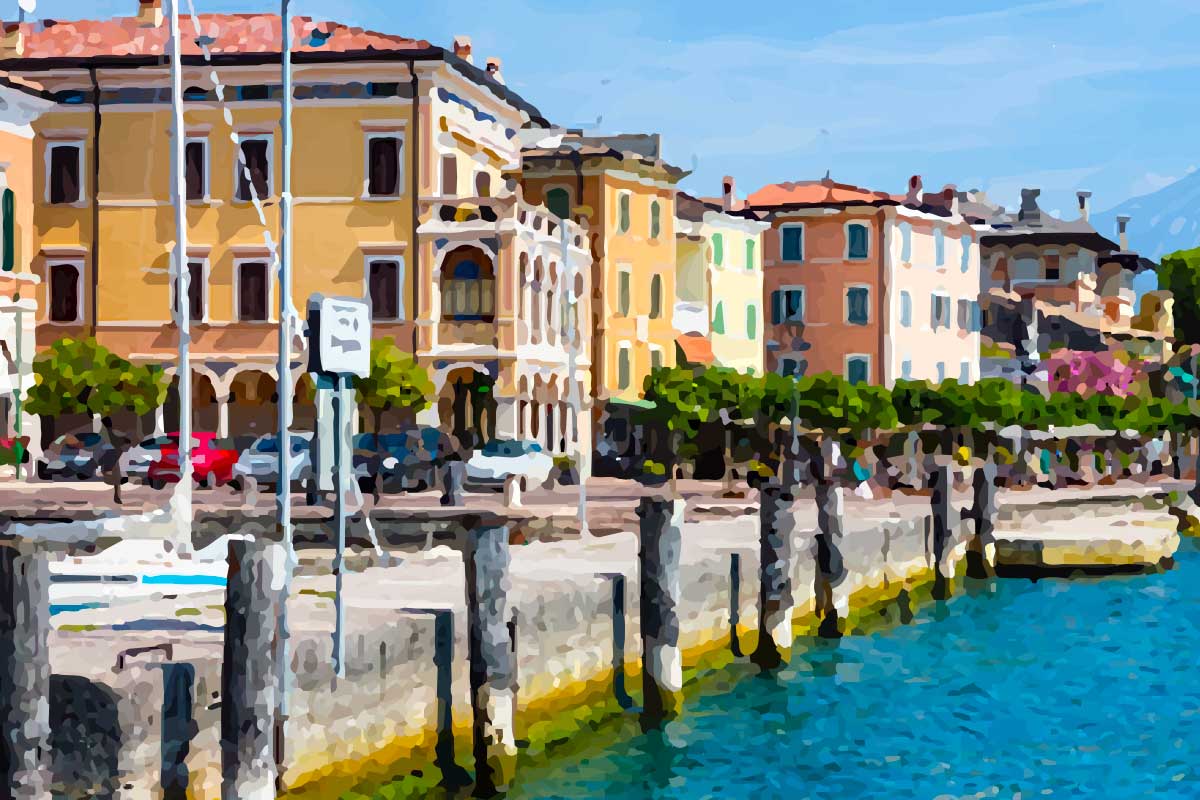


Gargnano is mentioned for the first time in a document in 973. Stone finds, on the other hand, prove that Etruscans, Celts, Romans and Cenomani lived in the area of today's town.
From the late Middle Ages to the modern age, Gargnano was governed by the Republic of Venice. The Serenissima has left its mark, above all in art, of course.
Today Gargnano, with its picturesque old town, winding streets and colorful houses, nestled between the mountains and Lake Garda, between nature and culture, is a place that has a lot to offer its guests. Also and precisely because it is not yet flooded with tourists.
In the 13th century the Franciscans founded a monastery here at the request of the bishop. The monastery church was consecrated to the founder of the order.
The fourteenth-century cloister is the oldest structure in the city of Gargnano and one of the most evocative spiritual places on Lake Garda.
It features faceted columns and is decorated with citrus motifs, a motif found in other buildings in the city. Two ancient finds are kept in the cloister: a table dedicated to Neptune and a small altar dedicated to a local divinity. The nave received its present form between the 17th and 18th centuries. You can admire paintings by Giovanni Andrea Bertanza and Andrea Celesti.
It was built in about 7 years at the end of the 19th century (18929) and was to serve as the summer residence of the Feltrinelli family.
Villa Feltrinelli was occupied in October 1943 when Mussolini chose it as his residence to have easy access to the headquarters, now Palazzo Feltrinelli, also in Gargnano.
It was also equipped with a shelter, which is now the hotel's boiler room, and a roof protection system: two small cannons and anti-aircraft machine guns.
Today it is the prestigious Grand Hotel Villa Feltrinelli, famous for its refined atmosphere, luxurious furnishings and the beautiful park that surrounds the villa.
Feltrinelli Palace was built between 1889 and 1899 as a private residence in Piazza Vittorio Veneto. The imposing building has a turbulent history closely linked to the Italian Social Republic and Mussolini. Today the building houses a branch of the University of Milan, which holds courses and workshops there.
These are just three examples of the many historical beauties of Gargnano. In the months of July, August and September, the municipality organizes various guided tours. For example, one of the excursions is dedicated to medieval Gargnano, another to the artists of the Serenissima, that is, the Republic of Venice. One of the most illustrious visitors to the city was the English writer David Herbert Lawrence, who stayed in Gargnano from September 1912 to April 1913.
In some of his works he immortalized Gargnano. An example is "Twilight in Italy". You can follow in his footsteps on a hike.
